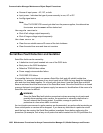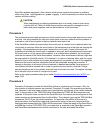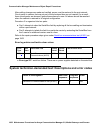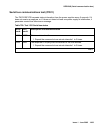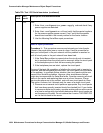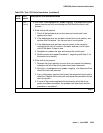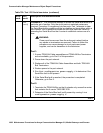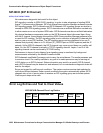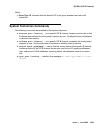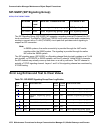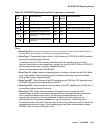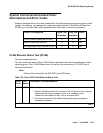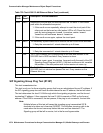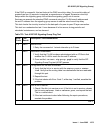
Communication Manager Maintenance-Object Repair Procedures
1968 Maintenance Procedures for Avaya Communication Manager 3.0, Media Gateways and Servers
SIP-BCH (SIP B Channel)
S8700 | 8710 / S8500 / S8300
No maintenance diagnostic tests exist for this object.
SIP signaling is similar to ISDN Q.931 signaling. In order to take advantage of existing ISDN
Avaya™ Communication Manager, SIP trunk AvayaCommunication Manager software includes
SIP signaling groups, SIP D channels and SIP B channels. SIP signaling groups are similar in
concept to ISDN PRI signaling groups. SIP D-channels are an artificial fabrication created only
to allow maximum re-use of system ISDN code. SIP B channels are also an artificial fabrication.
No physical hardware components make up the SIP B-channel object discussed here. Along
with the D channel, these objects allow existing ISDN Communication Manager software to be
re-used for SIP trunking. The SIP signaling group is not a collection of physical D-channels that
exist on one or more DS1 facilities. The SIP signaling group can be considered to be one D
channel that physically rides on a C-LAN port (IP_PROCR port on S8300 systems) and the IP
network. Unlike ISDN D-channels, the SIP D channel may come up and down on a call-by-call
basis. So, the SIP D channel is actually a TCP/IP signaling channel. Layers 1 and 2 of this
signaling channel can be monitored by IP PING testing.
Performance in terms of voice latency for a signaling group is monitored by background
measurements collected by the Media Processor board.
SIP B channels use Media Processor ports to carry the actual bearer. The media processor port
is a service circuit. On a call-by-call basis, any port of a media processor may be serving an
H.323 station or an SIP B channel. Status information may exist for a specific SIP B channel,
and a SIP B channel may be busied out and released, but no maintenance diagnostic tests will
exist for the object.
Errors are logged for craft busyout conditions. The system receives service state updates for
craft-driven busyout/release. Under normal conditions the system automatically places SIP B
channels into or out of service when it receives an SIP signaling-group service state update.
Craft busyout drops active calls.
Error Log Entries and Test to Clear Values
H323-BCH B-Channel Error Log Entries
Error
Type
Aux
Data
Associated Test Alarm
Level
On/Off
Board
Service
State
18 (a
) Any B-channel busied out Warning off OOS



